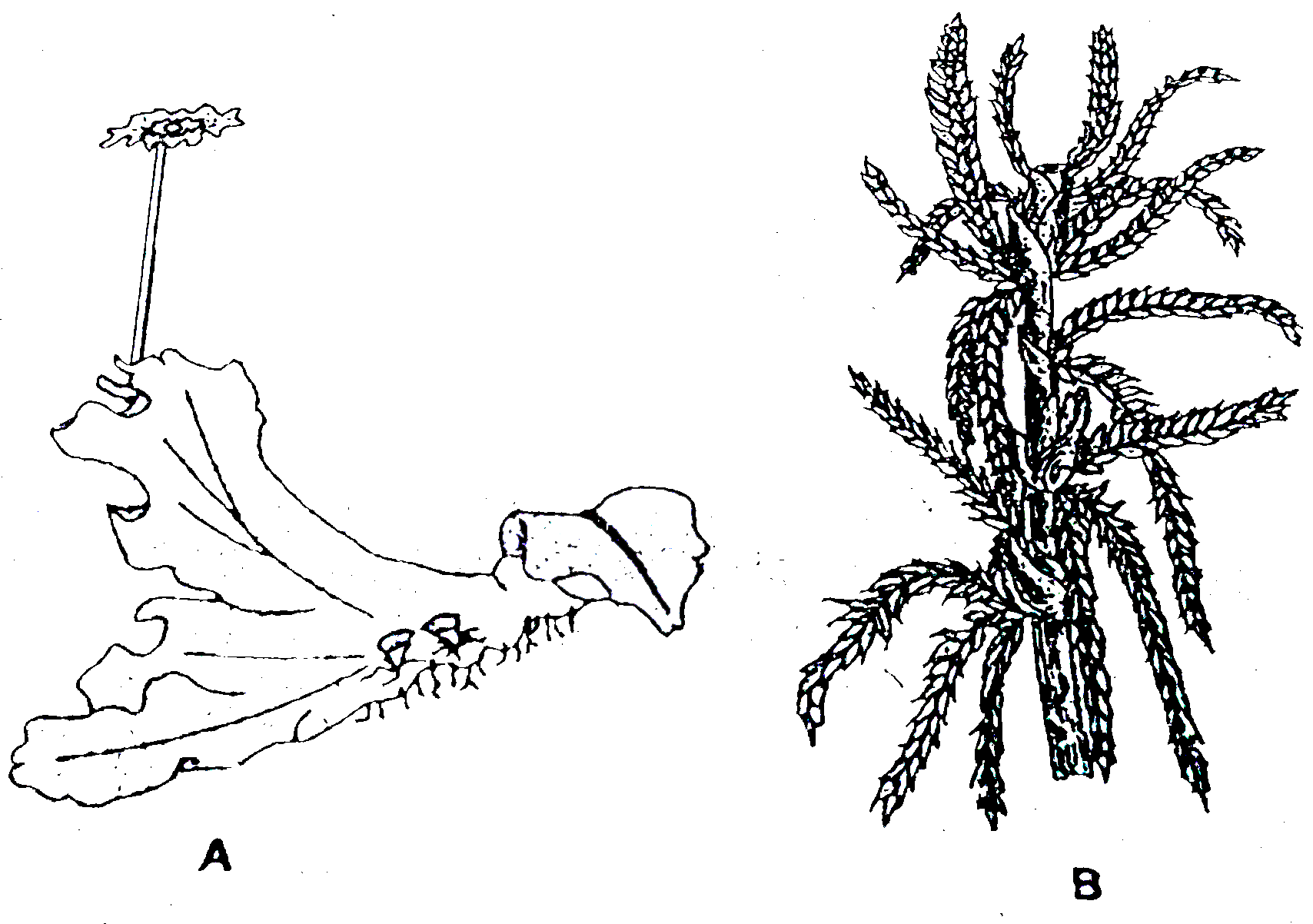Read the features of plants given below:
Thick waxy stem
Choose the type of plant for every feature given in a, b, c, d, e and f from the list given below:
Aquatic plant, Desert plant, Mountainous plant
Step-by-Step Solution:
1. Identify the Feature: The feature given is "Thick Waxy Stem."
2. Understand the Purpose of the Feature: A thick waxy stem is designed to help plants retain water. This is particularly important in environments where water is scarce, as it minimizes water loss through transpiration.
3. Consider the Types of Plants:
- Aquatic Plants: These plants are adapted to live in water. They typically have hollow stems to help them float and do not require a thick waxy coating.
- Desert Plants: These plants are adapted to arid conditions where water is limited. They often have thick, waxy stems to prevent water loss.
- Mountainous Plants: These plants are adapted to cold and snowy environments. They usually have needle-like or spine-like leaves to shed snow and reduce water loss.
4. Match the Feature to the Plant Type: Since the thick waxy stem is primarily a feature that helps retain water in dry conditions, it is characteristic of desert plants.
5. Conclusion: Therefore, the type of plant that has a thick waxy stem is the Desert Plant.
---
- Aquatic Plants: These plants are adapted to live in water. They typically have hollow stems to help them float and do not require a thick waxy coating.
- Desert Plants: These plants are adapted to arid conditions where water is limited. They often have thick, waxy stems to prevent water loss.
- Mountainous Plants: These plants are adapted to cold and snowy environments. They usually have needle-like or spine-like leaves to shed snow and reduce water loss.
Topper's Solved these Questions
- THE LIVING ORGANISMS AND THEIR SURROUNDINGS BOOK - NCERT EXEMPLARCHAPTER - THE LIVING ORGANISMS AND THEIR SURROUNDINGS EXERCISE - LONG ANSWER QUESTIONS
2 Videos
- THE LIVING ORGANISMS AND THEIR SURROUNDINGS BOOK - NCERT EXEMPLARCHAPTER - THE LIVING ORGANISMS AND THEIR SURROUNDINGS EXERCISE - VERY SHORT ANSWER QUESTIONS (FILL IN THE BLANKS)
4 Videos
- GETTING TO KNOW PLANTS BOOK - NCERT EXEMPLARCHAPTER - GETTING TO KNOW PLANTS EXERCISE - LONG ANSWER QUESTIONS
5 Videos
Similar Questions
Read the features of plants given below:
Hollow stem
Choose the type of plant for every feature given in a, b, c, d, e and f from the list given below:
Aquatic plant, Desert plant, Mountainous plant
View SolutionRead the features of plants given below:
Cone shaped plants
Choose the type of plant for every feature given in a, b, c, d, e and f from the list given below:
Aquatic plant, Desert plant, Mountainous plant
View Solution
Knowledge Check
Which type of plants are very tall and have hard and thick brown stem?
ATreesBHerbsCShrubsDNone of theseAll plants given below produce many seeded fruits, except
AOrchidsBOrobancheCStrigaDMangoChoose the correct feature of the muscle fibre given below.
 AContraction of cells as a unit due to the presence of communication junctionsBFusiform tissue found only in the heart.CMuscles have striations and are bundled together in a parallel fashion.DA sheath of tough connective tissue encloses several bundles of the muscle fibres.
AContraction of cells as a unit due to the presence of communication junctionsBFusiform tissue found only in the heart.CMuscles have striations and are bundled together in a parallel fashion.DA sheath of tough connective tissue encloses several bundles of the muscle fibres.
Read the features of plants given below:
Sloping branches
Choose the type of plant for every feature given in a, b, c, d, e and f from the list given below:
Aquatic plant, Desert plant, Mountainous plant
View SolutionRead the features of plants given below:
Short roots
Choose the type of plant for every feature given in a, b, c, d, e and f from the list given below:
Aquatic plant, Desert plant, Mountainous plant
View SolutionRead the features of plants given below:
Small or spine-like leaves
Choose the type of plant for every feature given in a, b, c, d, e and f from the list given below:
Aquatic plant, Desert plant, Mountainous plant
View SolutionIdentify the plants A and B in the figures given below

View SolutionThe heights of 100 plants in a garden are given below :

find the mean height per plant.
View Solution
